WHAT IS VIRTUAL MOBILITY COACH?
The Ready State Virtual Mobility Coach is like having a virtual Kelly Starrett in your pocket.
Get early access to the latest promotions, blog articles, and all things to get you READY!
WHAT IS VIRTUAL MOBILITY COACH?
The Ready State Virtual Mobility Coach is like having a virtual Kelly Starrett in your pocket.
Relieve pain, prevent injury, and increase performance. Get customized mobility coaching developed by Dr. Kelly Starrett.
The Ready State 101 course reveals the core principles of Dr. Kelly Starrett’s coaching methods. Gain the expertise to improve anyone’s movement.
The Ready State 102 course is an advanced six-week online course with both self-paced material and LIVE virtual Q&A calls.
Get one-on-one remote movement and mobility coaching from a certified Ready State coach.
Apply for private coaching with the world's #1 movement and mobility expert.
Kelly Starrett’s custom pain protocols teach you the simple and effective methods to treat all your pain and stiffness—for good.
Look good while you mobilize!
Shop exclusive tanks, t-shirts, sweatshirts, hats and more.
The TRS store offers a wide variety of mobility tools & kits perfect for your pre/post workout routines.
Kelly has written many books about movement, mechanics, and mobility which have made the New York Times bestseller list.
World-class experts reveal how to get — and stay — ready…for anything. Join hosts Dr. Kelly Starrett and Juliet Starrett for this eye-opening podcast.
Discover comprehensive resources and articles written by certified coaches and experts in the field.
The Ready State helps everyday athletes enjoy better movement, agility, and strength — with less pain and more protection against injury, especially as they get older.
Our work with elite athletes serves as the proving grounds for our methods. Most people don’t play professional sports. But if our methods help athletes at the highest levels, they can work for anyone.
i think we should also send him webinar ideas as well….
i’m wondering if you try some banded distractions to the outside and do some other hip mobs first, and then go back to the super frog, that you may create some space by reseating the femoral head first via other mobs….
Hmm was there a cause to this condition like injury or other? Is there pain at all?
Why don’t you hop on the train to NYC/Brooklyn to Crossfit Virtuosity and try to get Keith Wittenstein?
I think that FMS is a great measure of general physical capability and teases out imbalances very well. I also think it is a great way to take:
1) someone who is new to CF or new to fitness and take them to a level of physical readiness.
2) take someone who was injured and rehab them back to a level of readiness.
3) balance out an athlete, either new or experienced, who discovers they have a lot of imbalances between their left and right sides.
So in those applications, FMS gives you a very systematized way of doing that, and also not as a clinician but as a coach. Their roadmap is easy to follow and is excellent and easy to implement. FMS also helps you prioritize which problem to fix first so that helps as well. It turns out that the correctives may also magically address other issues you found during the screen, while fixing the first problem you started with!
I believe FMS has been in development a lot longer than MWOD has been around and IMHO therefore is more complete. MWOD’s mobility techniques are more numerous than as described in FMS. That doesn’t mean that FMS practitioners don’t know MWOD mobility techniques. Many already do. It’s just nice that Kstarr took them public with the help of the internet.
But IMHO I think that MWOD’s current content and messages are missing the stability pieces of athlete preparedness. It is true that if you mobilize, you can often get an athlete’s body to magically turn on correctly. However, there are many cases that after mobilization, the athlete still really isn’t ready to build fitness and strength on top of dysfunction, as Gray Cook likes to put it. And mobilizing more isn’t going to help or be optimal in the achieving the end goal. FMS provides a systematic way to do that.
So here is where FMS can be very additive to MWOD. You determine if FMS is necessary or desired. You start with mobility using FMS as a guide and enhance with MWOD techniques. You then move to static stability with FMS correctives, and then onwards to dynamic stability. then the athlete is (more) prepared to do whatever they want to do.
Where MWOD is more proficient is preparing you for Olympic lifting ala Category 1 thru 3 movements. FMS IMHO is more a general preparedness whereas a lot of MWOD is gearing towards CF and Olympic lifting preparedness.
In answer to your example, FMS’s deep squat (and its other tests) test to the extremes of an athlete’s potential to really make imbalances and problems glaring. so FMS’s deep squat has your feet at shoulder width and arms at a specific width as setup by a bar held overhead. But just because you can’t do a good FMS Deep Squat doesn’t mean you can’t do an overhead press and achieve the deep squat position. For example, I can now get to deep squat position and with a bar overhead, but my arms need to be way wide and my stance is slightly wider than shoulder width – this still means i would not get a 3 on the FMS since the FMS is specific on testing setup.
Thus there could be many cases where MWOD test and retests of the archetypal shapes would be more valid than using FMS. But to give a counter example, just because I use MWOD techniques and now can achieve an overhead arms position without movement in my ribcage, doesn’t mean i have enough stability in my shoulders to suspend any kind of weight overhead safely, or in a dynamic situation. You’d have to test and build up for that after you achieve the position through mobilizing.
I am certified in both FMS level 1 and 2. As Thor says, it is a nicely systematized approach to teasing out imbalances in the body and level 2 is the set of correctives that are used from the screen. so level 1 was fine but the meat of the FMS is really in level 2 and i would encourage you to go get certified in that.
looks like there are ones up for Mon Dec 9 thru Wed Dec 11 now….guess he was backlogged.
well i poked around for a while and think this would be something to look at:
the last dailyrx i see was friday. are you not seeing more than that?
ha yeah i live in the SF Bay so there are great resources here!
could be your hams, could be something else.
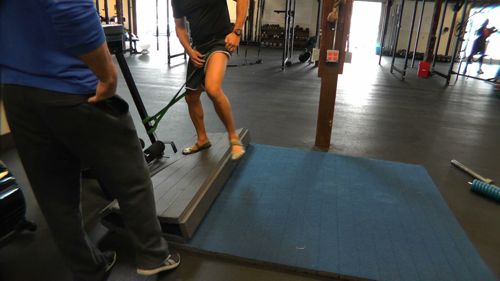
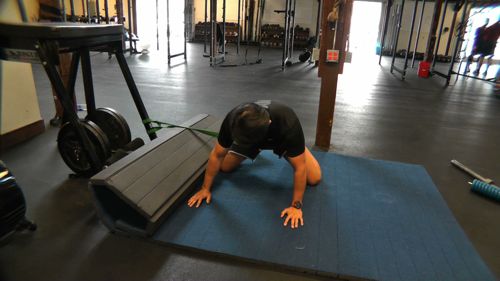
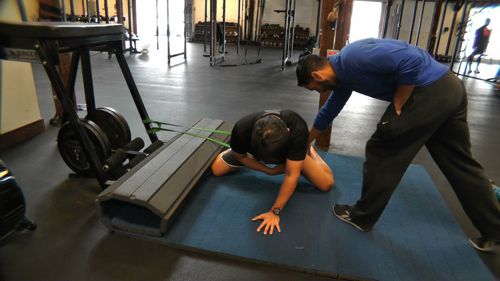
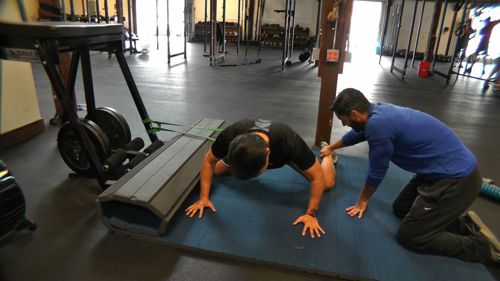
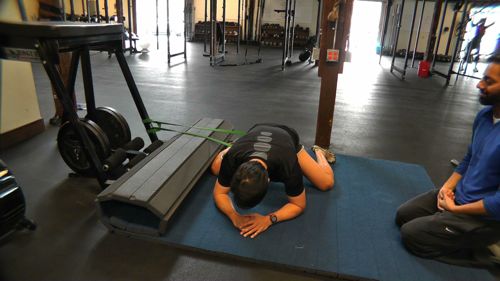
Nope – that one came from a session with Roop. He showed me a bunch of internal rotation mobs, some I had saw before and some not like this one.
did you mean these kinds of chairs?
Kaitlin, can you suggest more mwod videos regarding standing posture? Thanks!